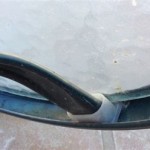Brick Patio Sand Joints: An Essential Guide
When installing a brick patio, the choice of joint material can significantly affect the aesthetics and longevity of your project. Among the various options available, sand joints stand out as a practical and versatile solution.
Sand joints are composed of finely graded sand that is applied between the bricks during installation. They provide several key benefits:
1. Drainage and Stability
Sand joints allow water to drain freely from the patio surface, preventing it from pooling and damaging the bricks. This drainage aids in preventing shifting and settling, ensuring the stability of your patio over time.
2. Flexibility
Unlike rigid joint materials like mortar, sand joints are flexible. This flexibility accommodates slight movements in the ground, helping to prevent the patio from cracking or breaking.
3. Aesthetic Appeal
Sand joints create a natural and rustic look, complementing various types of brick pavers. The color and texture of the sand can be customized to match the aesthetic of your outdoor space.
4. Ease of Installation
Sand joints are relatively easy to install, making them a suitable option for DIY enthusiasts. The sand is simply swept into the joints and compacted with a tamper to ensure a secure fit.
5. Maintenance
Sand joints require minimal maintenance. Over time, some sand may settle or be washed away by rain. Simply replenish the sand as needed to keep the joints filled.
Choosing the Right Sand
The type of sand used for brick patio joints plays a crucial role in its performance and longevity. It should be fine-grained, free of debris, and compacted properly to ensure stability. Some common types of sand suitable for brick patio joints include:
- Fine masonry sand
- Polymeric sand
- Kiln-dried sand
Installation Tips
To ensure optimal results, follow these tips when installing sand joints:
- Before applying the sand, thoroughly wet the brick surface to create a moist environment.
- Use a dry brush to sweep the sand into the joints, completely filling them.
- Compact the sand using a hand tamper or plate compactor, ensuring it is level with the brick surface.
- Allow the sand to dry before allowing foot traffic on the patio.
Conclusion
Brick patio sand joints offer a practical and versatile solution for creating a durable and aesthetically pleasing outdoor space. Their flexibility, drainage capabilities, and ease of maintenance make them an ideal choice for homeowners seeking a low-maintenance and stylish patio surface.

Polymeric Paver Sand Bagged Joint Mutualmaterials Com

Sand For Pavers Top 10 Facts Everyone Should Know The Paver Sealer

Benefits Drawbacks Of Using Polymeric Sand On Your Hardscape

Paver Sealing Vs Polymeric Sand And Restoration Dayton Cincinnati Columbus Oh

Is Polymeric Joint Sand Weed Proof Il Stone Brick Pavers Walkway Driveway Landscape Paver Restoration Contractors

Sand For Pavers Top 10 Facts Everyone Should Know The Paver Sealer

Applying Polymeric Sand To An Existing Patio Or Walkway Sakrete

Best Jointing Sand For Block Paving Driveways Joint It Fine

Which Sand Is Best For Paver Joints

Southwest Boulder Stone 40 Lbs Gray Paving Joint Sand Stabilizing For Pavers Brick Concrete Blocks Patio Stones 02 0333 The Home Depot








